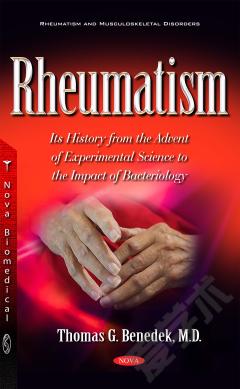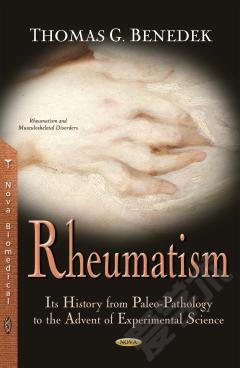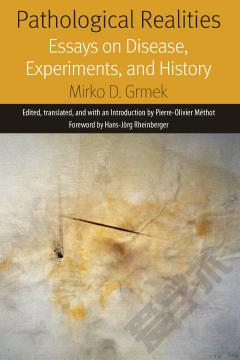Rheumatism: Its History from the Advent of Experimental Science to the Impact of Bacteriology
Rheumatism: From the Advent of Experimental Science to the Impact of Bacteriology follows Rheumatism: Its History from Paleo-pathology to the Advent of Experimental Science, which was published in 2015. The concept of the present book is that, as bacteriology developed as a scientific discipline, it gradually replaced the vague patho-physiologic concepts that explained “rheumatism.” Galen in about 200 CE displayed certainty about the basis of disease causation that remained satisfactory for 1700 years. The chronology wherein the existence of bacteria became recognized and eventually, over learned opposition became pathogens, is told in the introduction in excerpts from the writings of important participants. The main chapters of this book portray the historical development of the understanding of five rheumatic diseases. The first is gonorrheal rheumatism, which became gonococcal arthritis. It posed the question how, even if scientists acknowledge that a specific bacterial species is the cause of local symptoms, can this unpredictably cause symptoms at different locations. A chapter on reactive arthritis describes a disease that closely mimics gonorrheal rheumatism, and is shown to be caused by several different microbes, none of which are related to the bacterium that causes gonorrheal rheumatism. Chapter Four is a scientific biography of a German surgeon that exemplifies the consequences of becoming wedded to an erroneous discovery, and the protracted influence this may have on an entire area of research. His discovery was the bacterial cause of rheumatoid arthritis. This is followed in Chapter Five by the development of understanding the cause of rheumatic fever, and how this helped to differentiate this disease from rheumatoid arthritis. Chapter Six focuses on polymyositis and dermatomyositis, related diseases that bear some resemblance to trichinosis, a parasitic infection, as well as sometimes overlapping symptomatically with the last disease to be portrayed, scleroderma or systemic sclerosis. Thus, rheumatic syndromes have become recognized both as disease entities and increasingly subdivided by immunologic distinctions, the successor to bacteriologic distinctions. To facilitate access to the historically important references of contributors/investigators, biographical articles are inserted wherever possible. An index of these articles from both books is provided, as well as a glossary of terms with which some readers may be unfamiliar. Finally there is a bibliography of the author’s publications that pertain to the history of rheumatology and historical aspects of so-called rheumatic diseases.
{{comment.content}}








 京公网安备 11010802027623号
京公网安备 11010802027623号